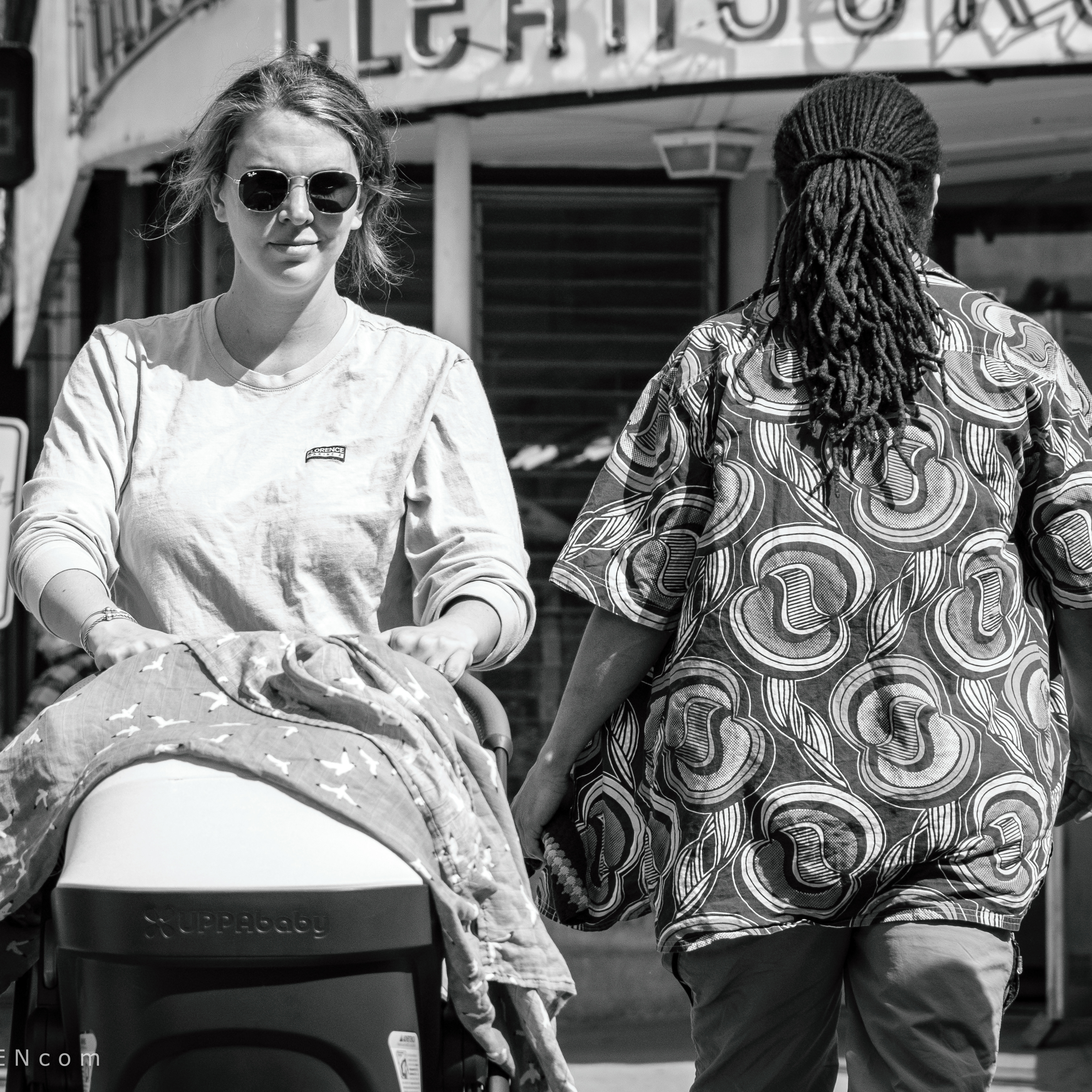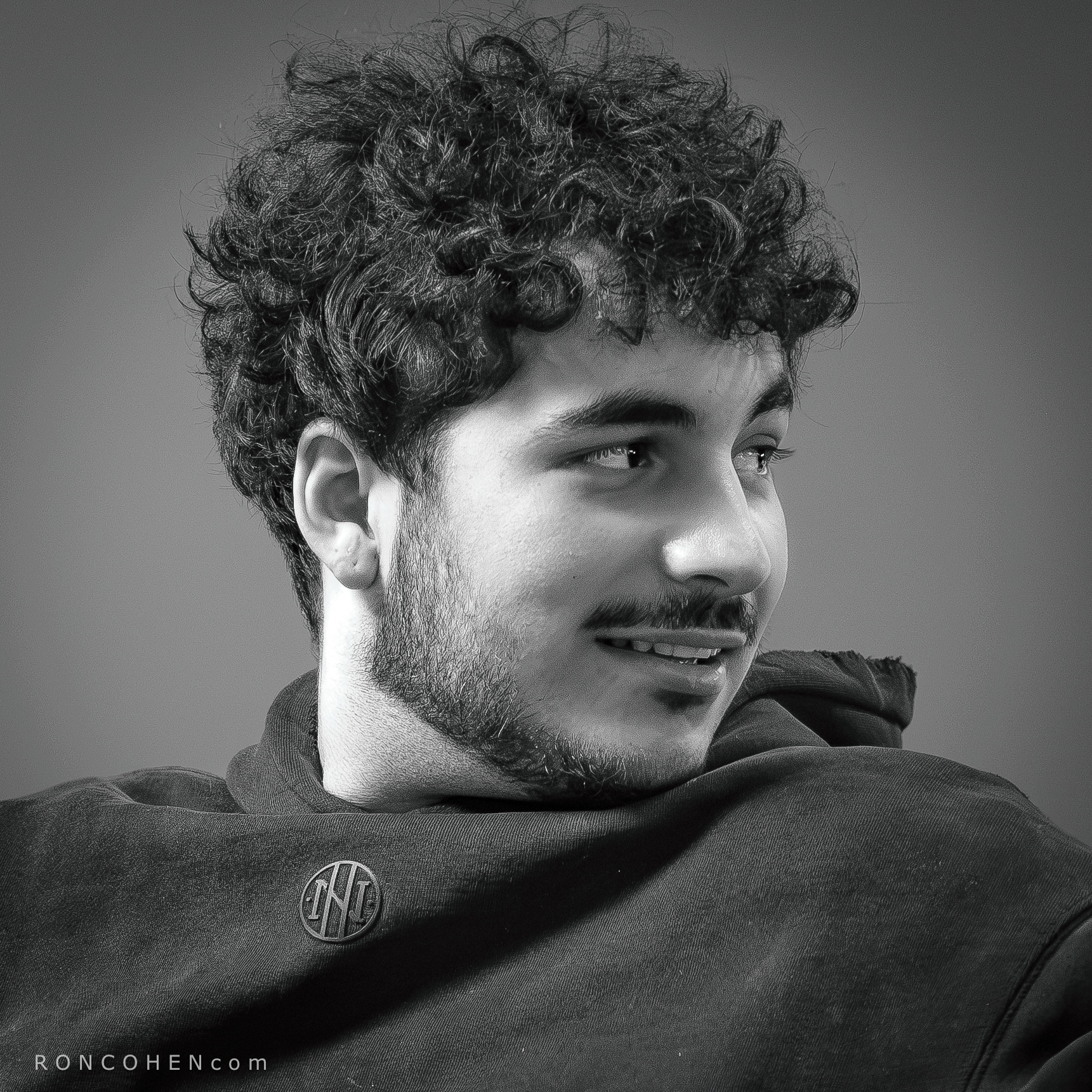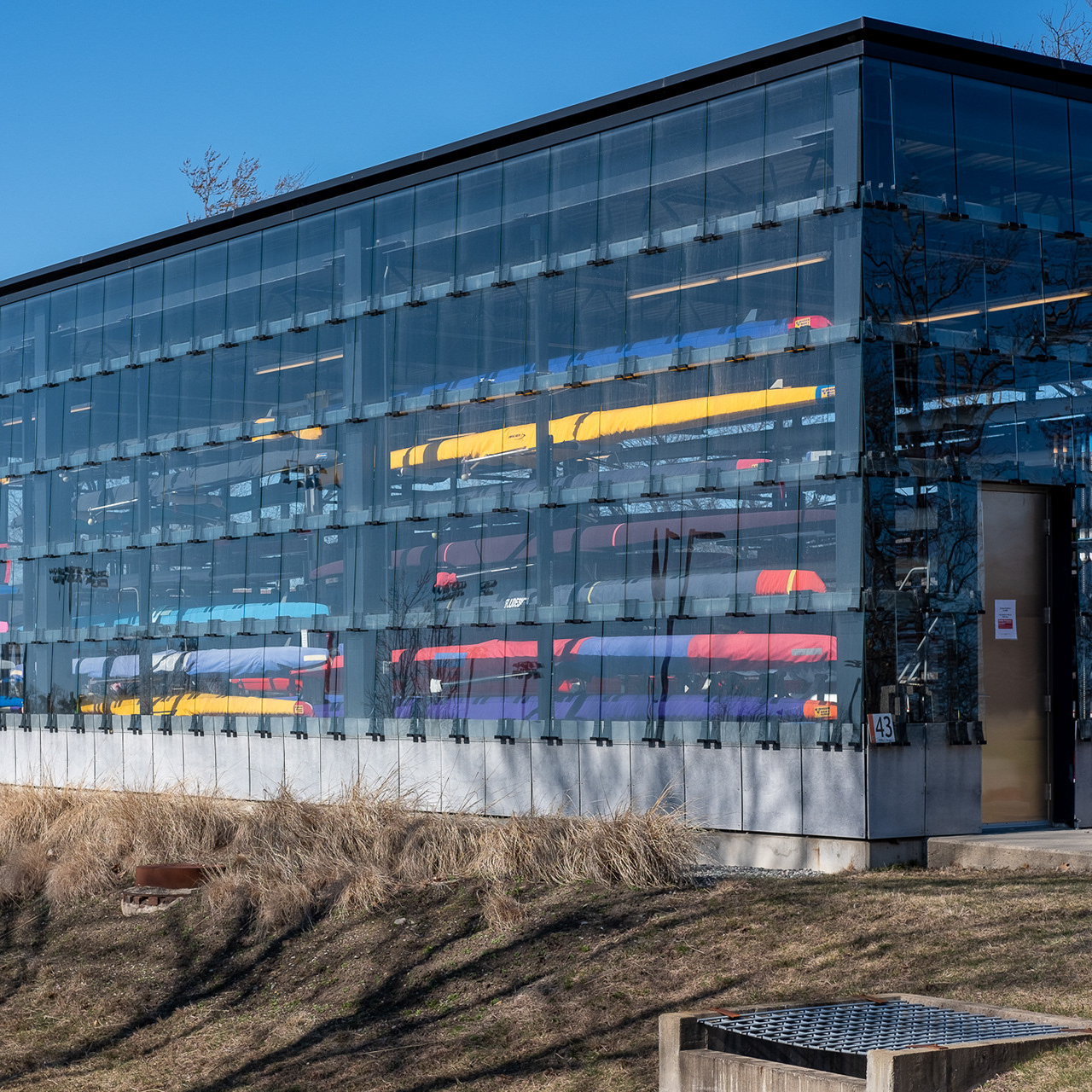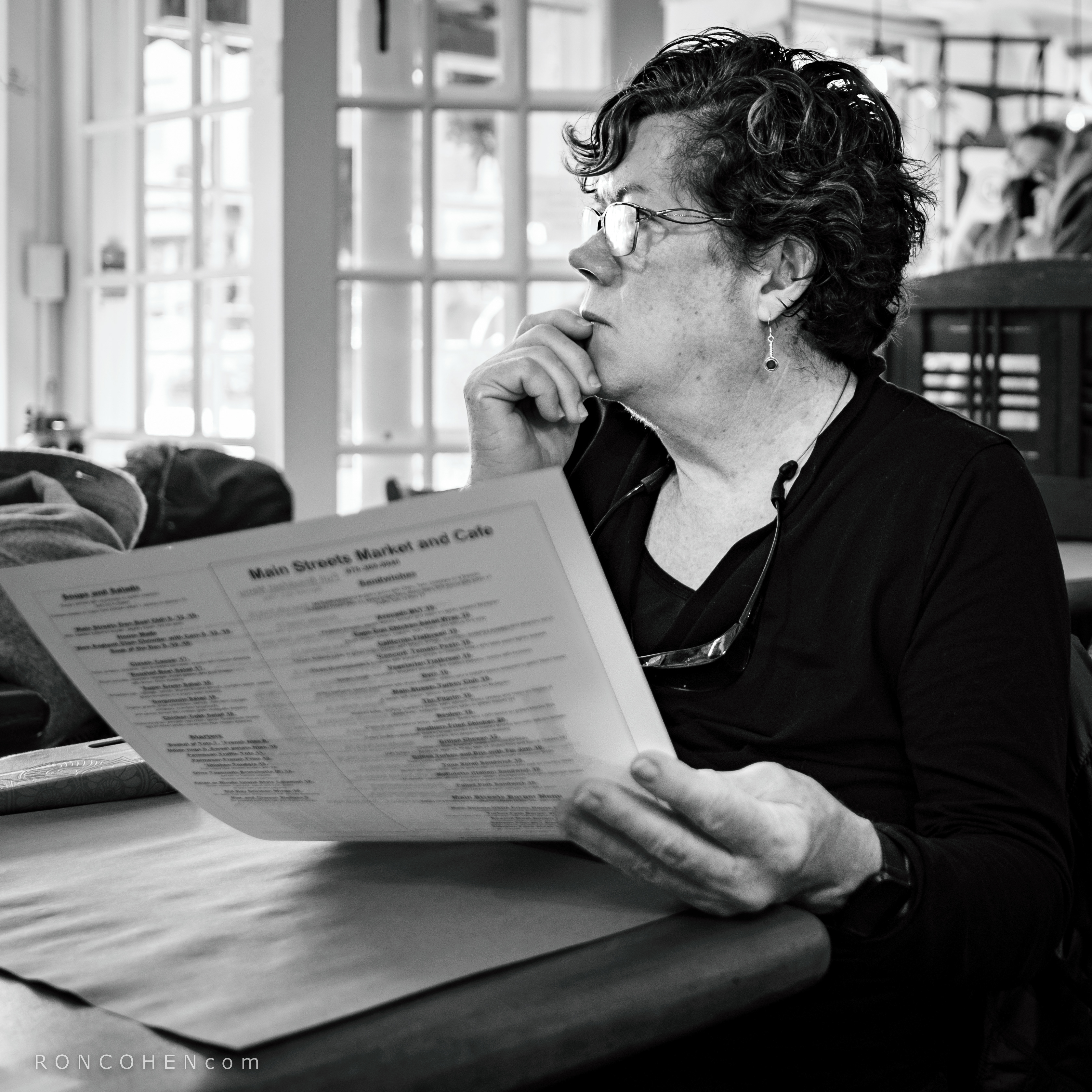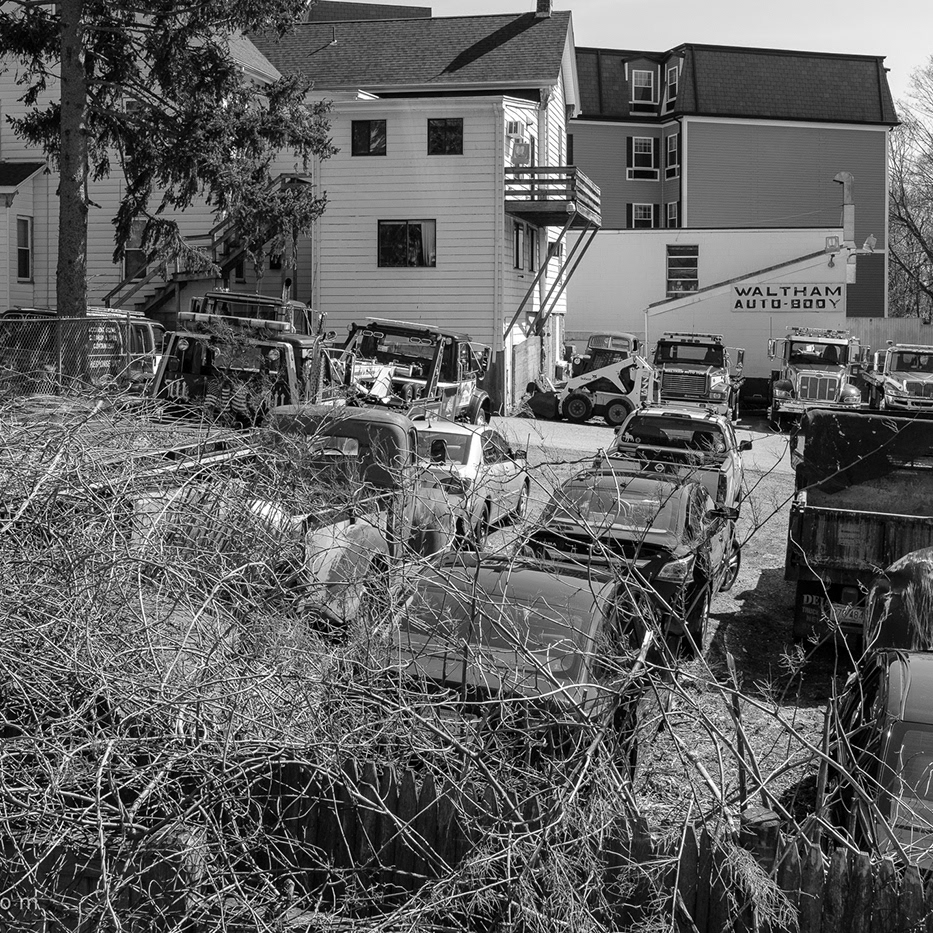
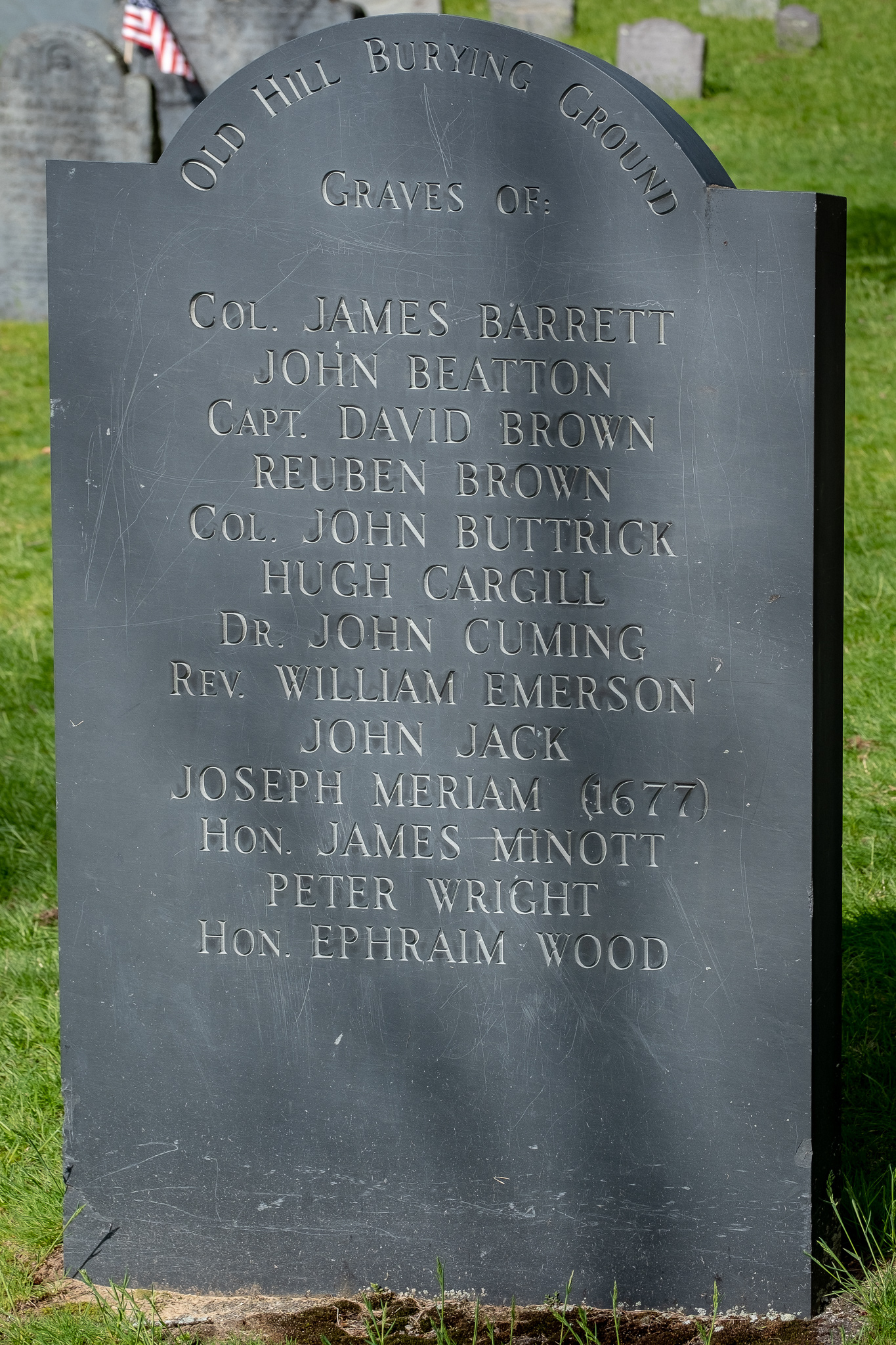
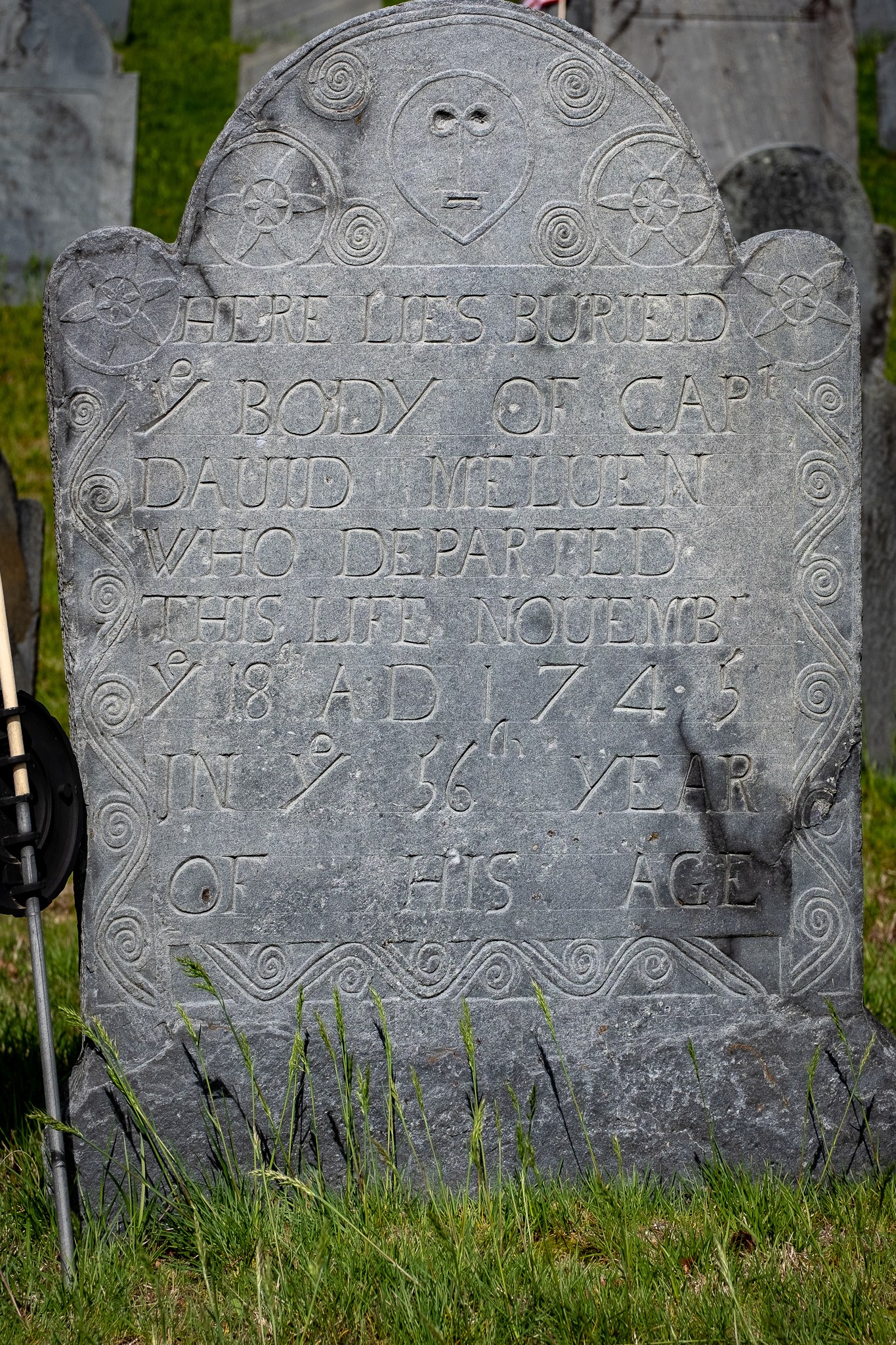
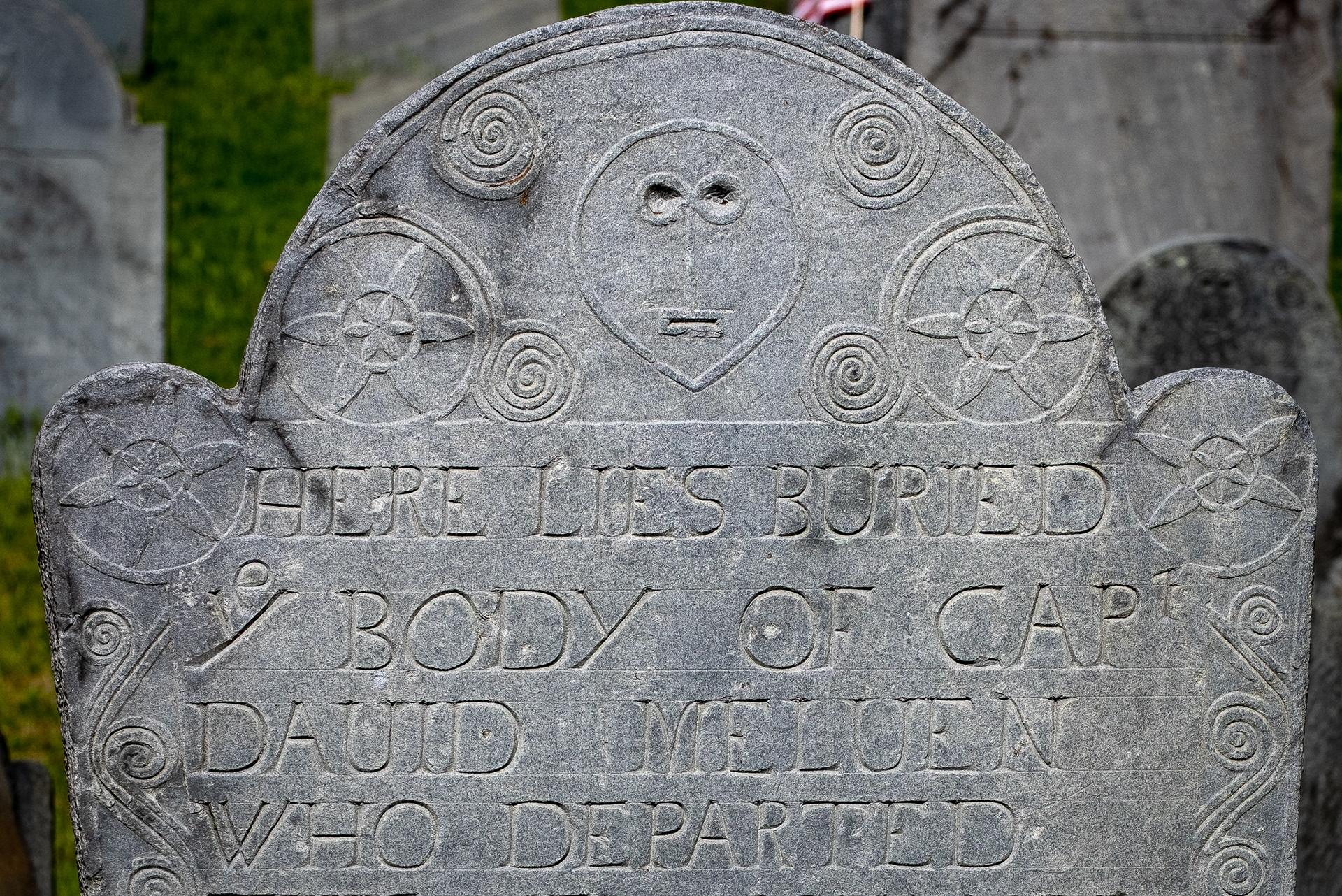
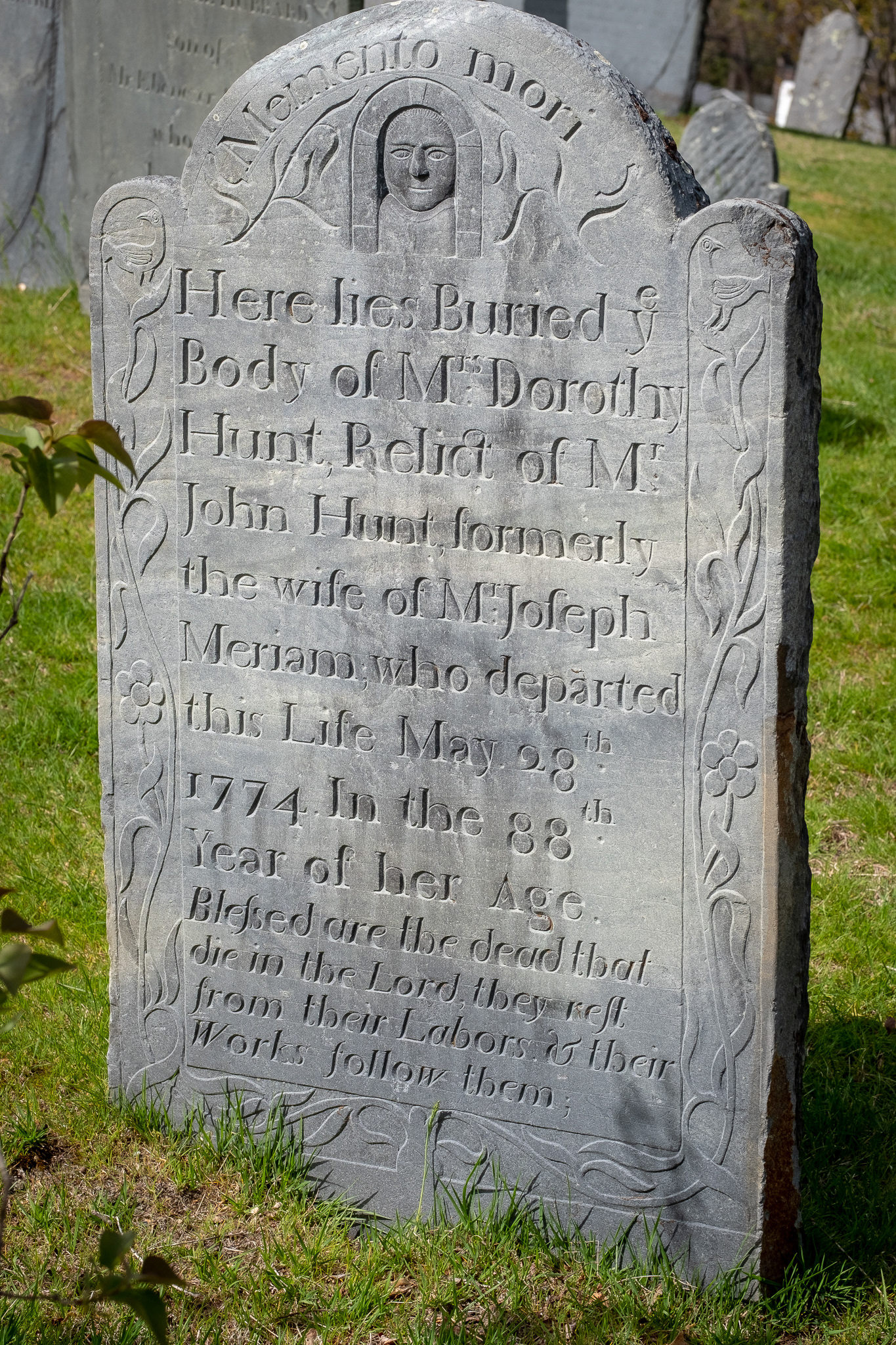
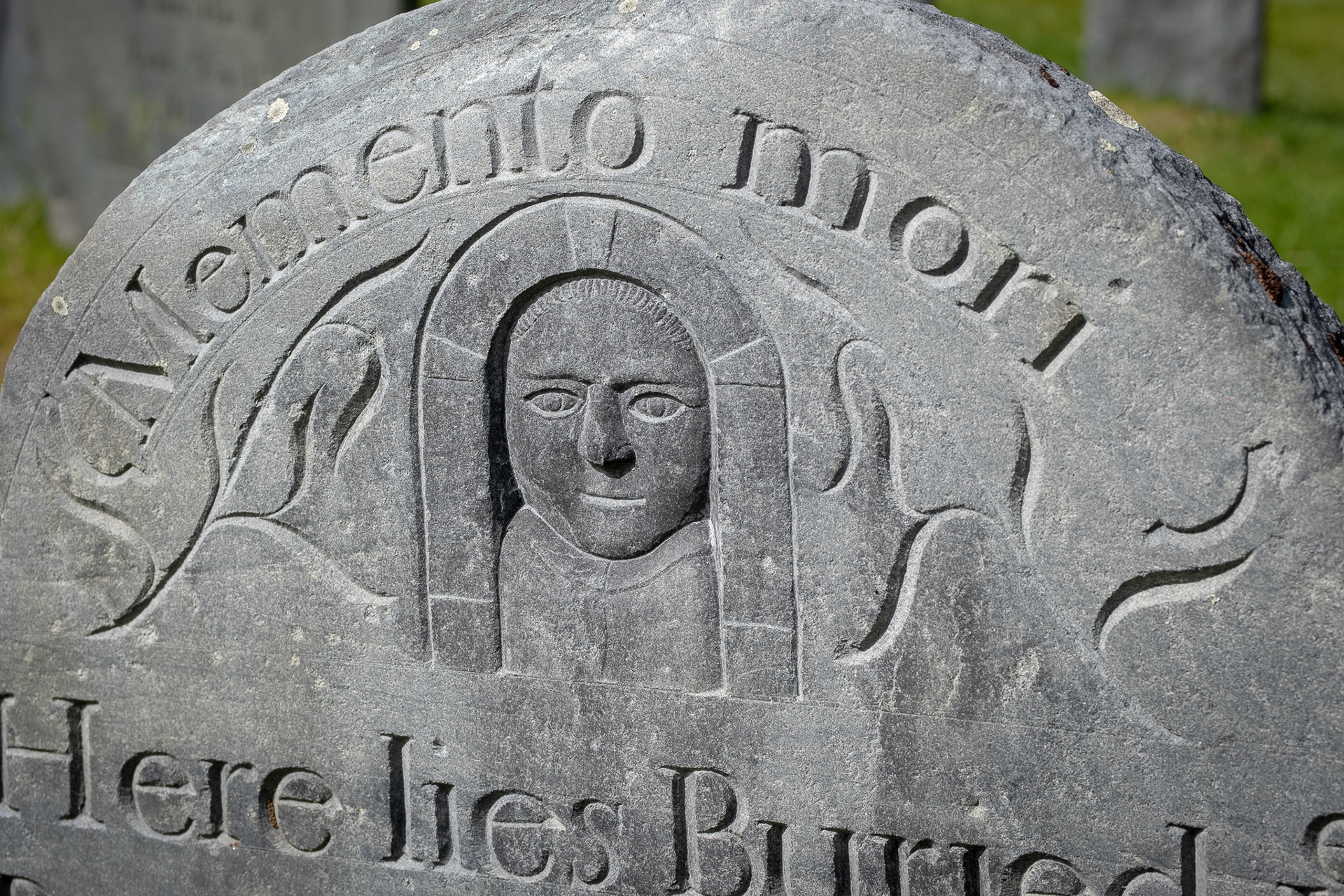
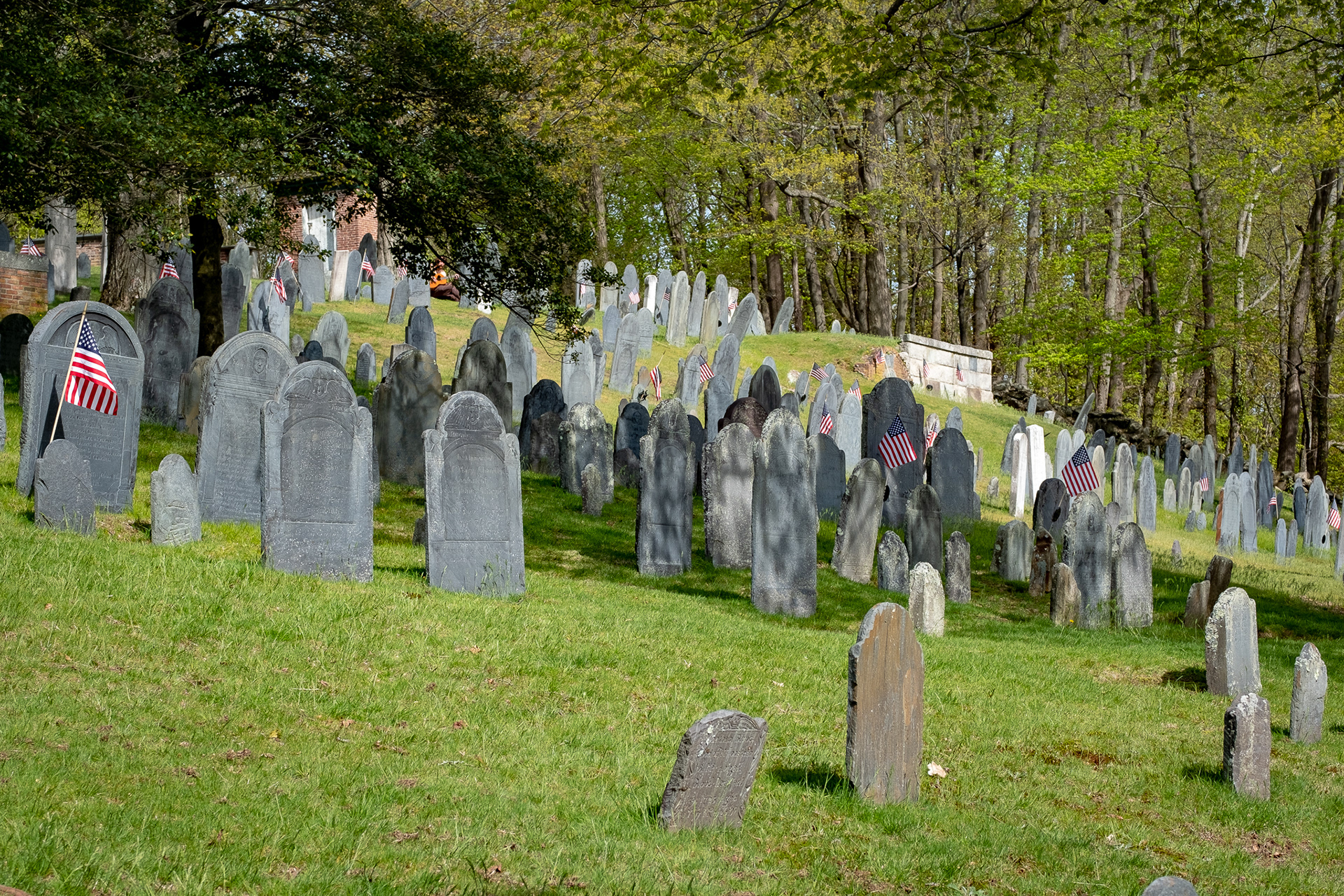
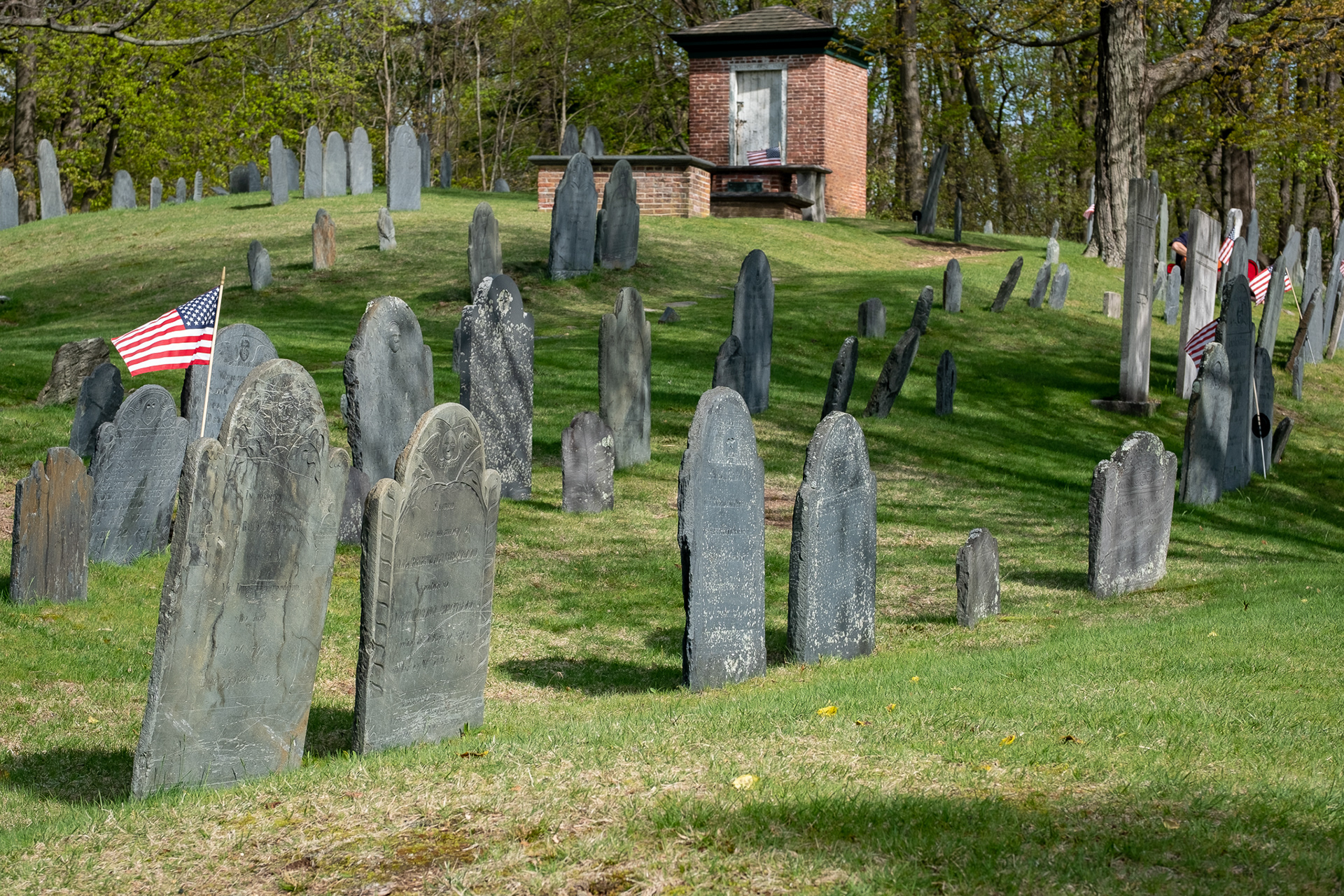
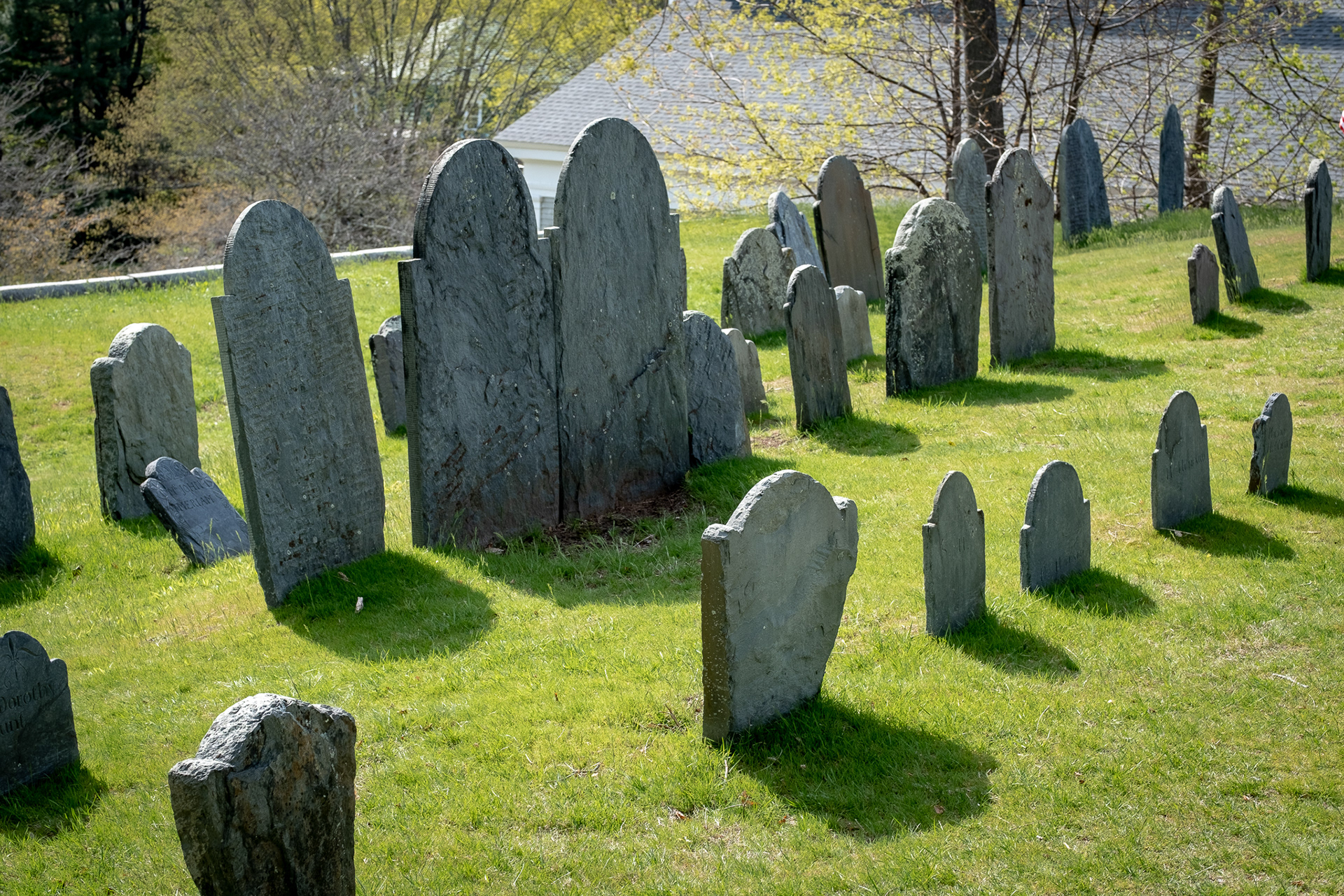
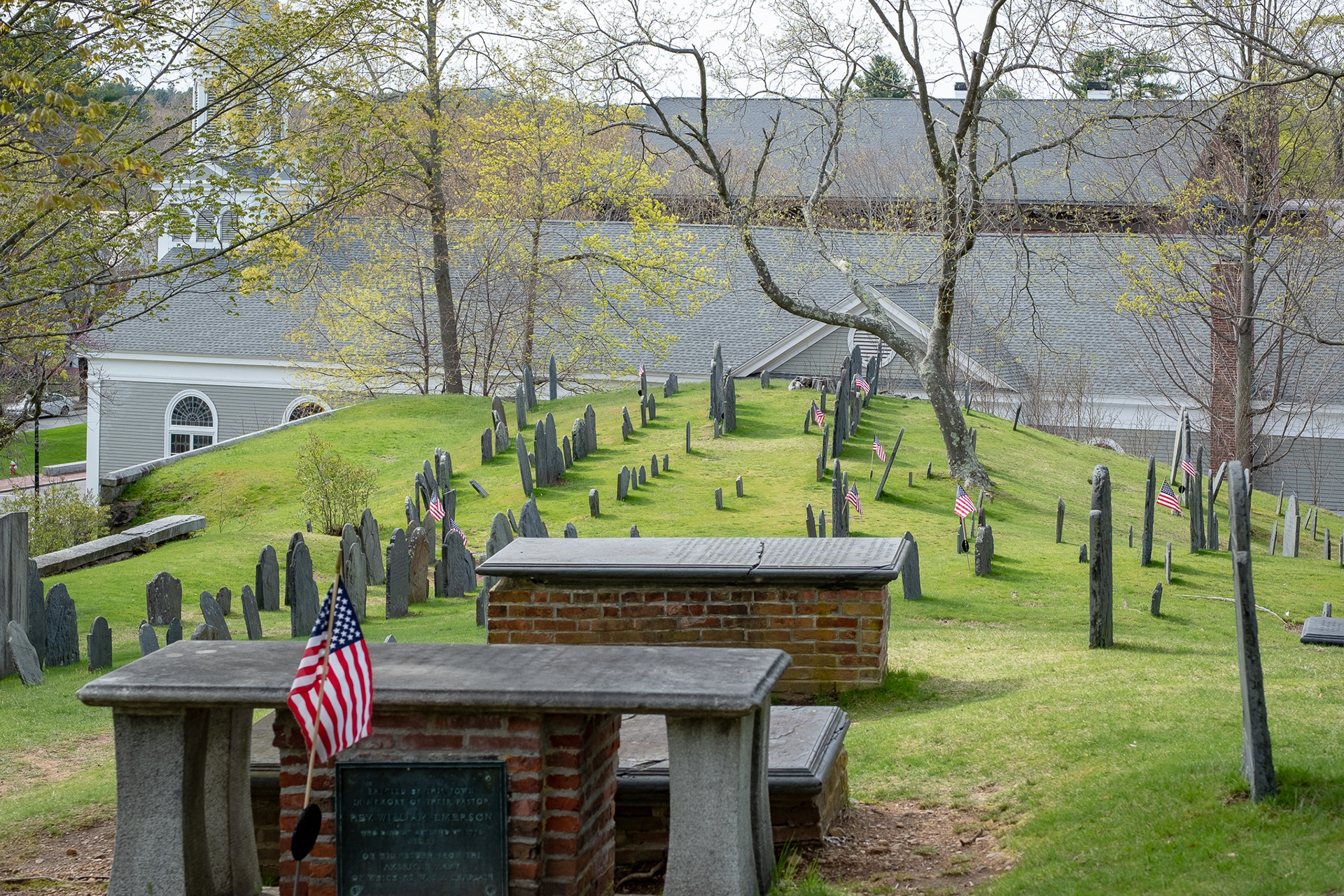
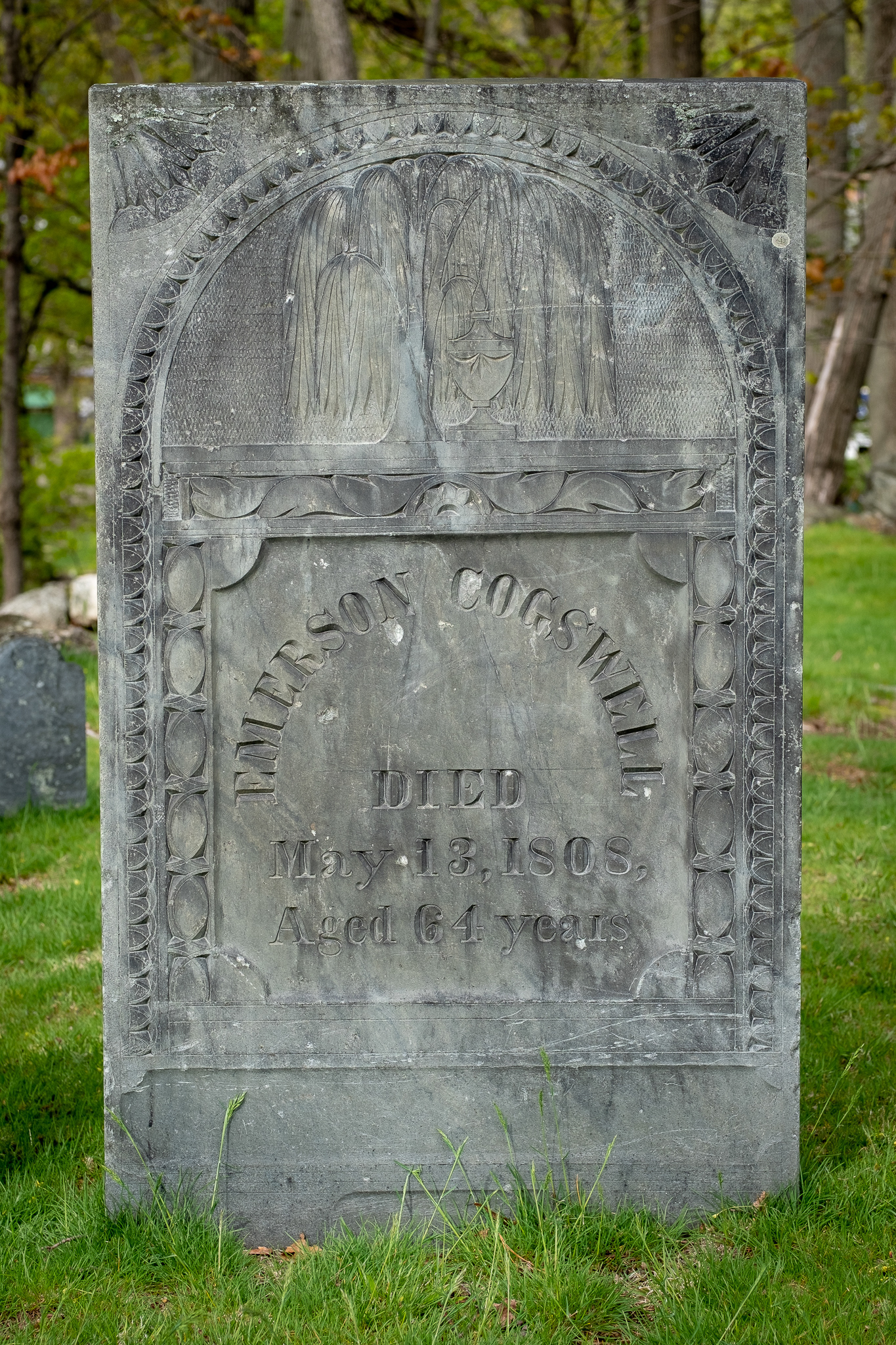
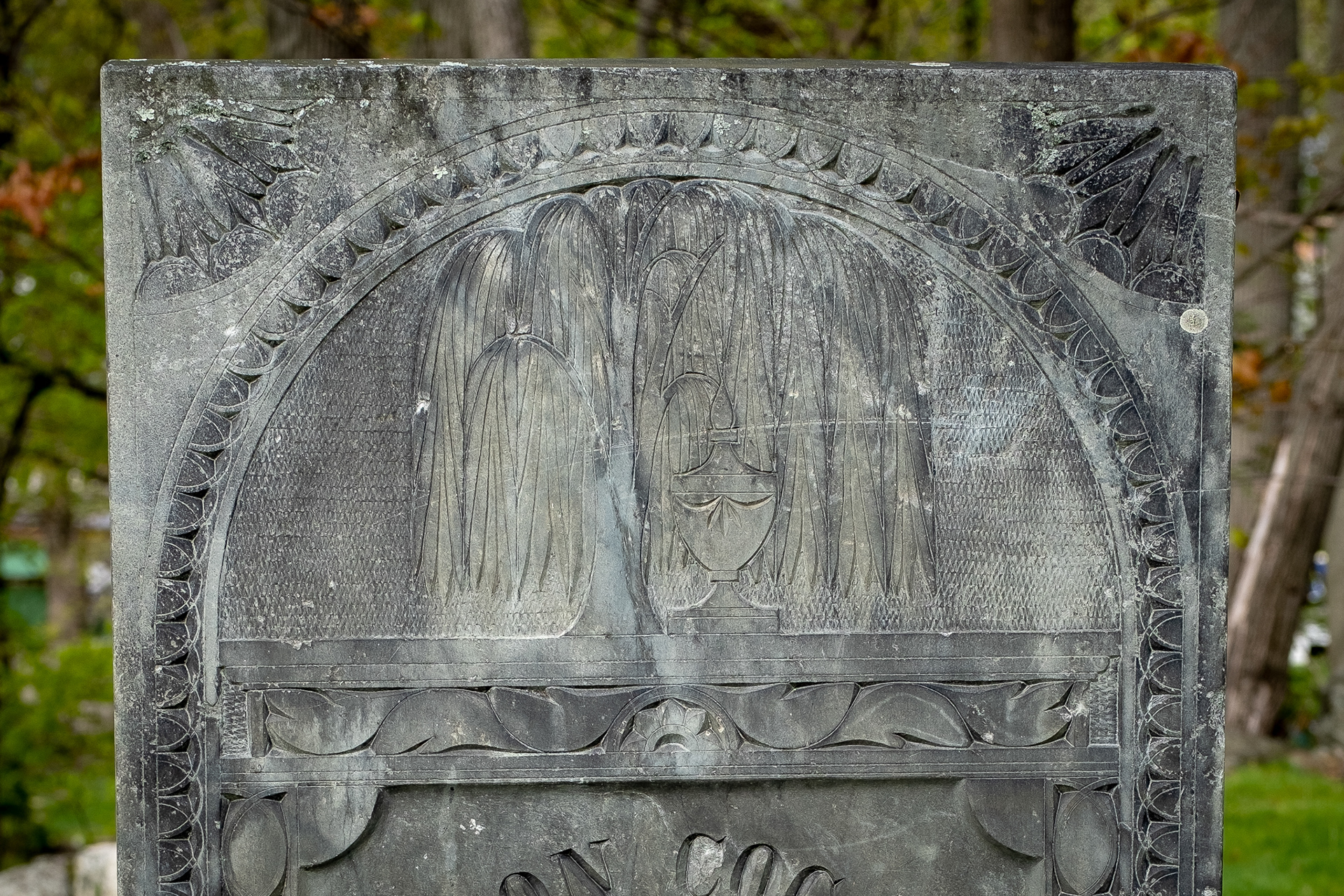
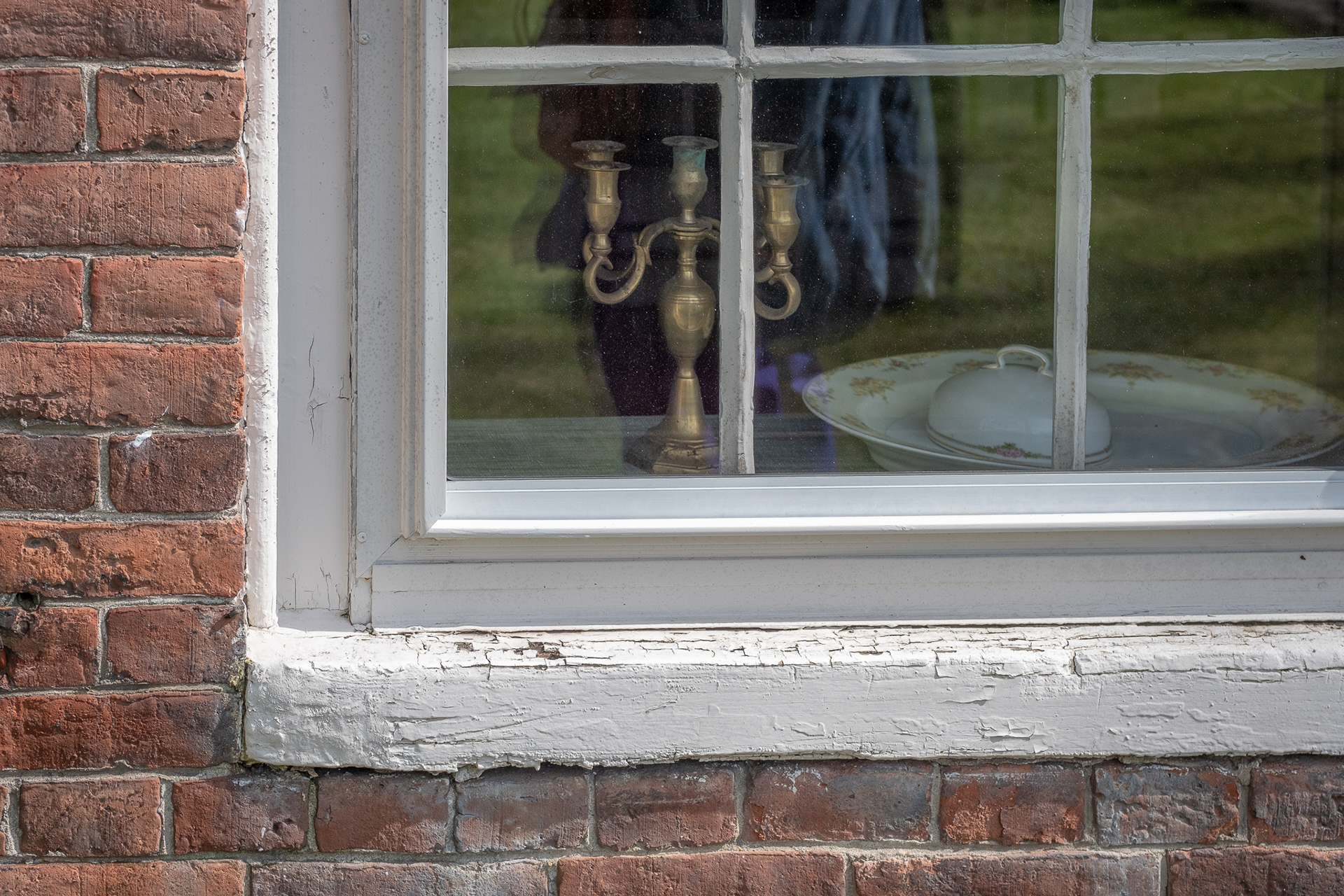

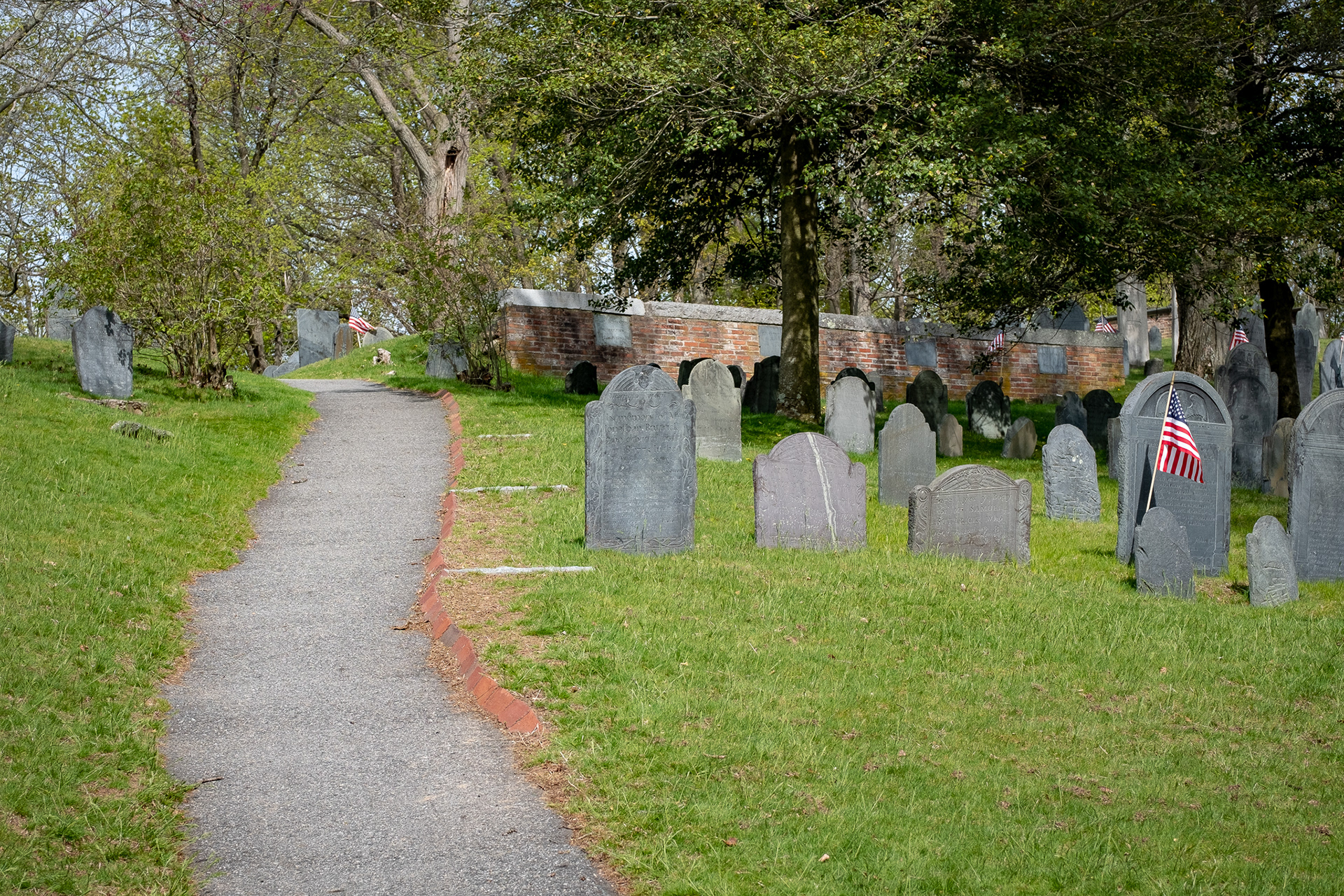

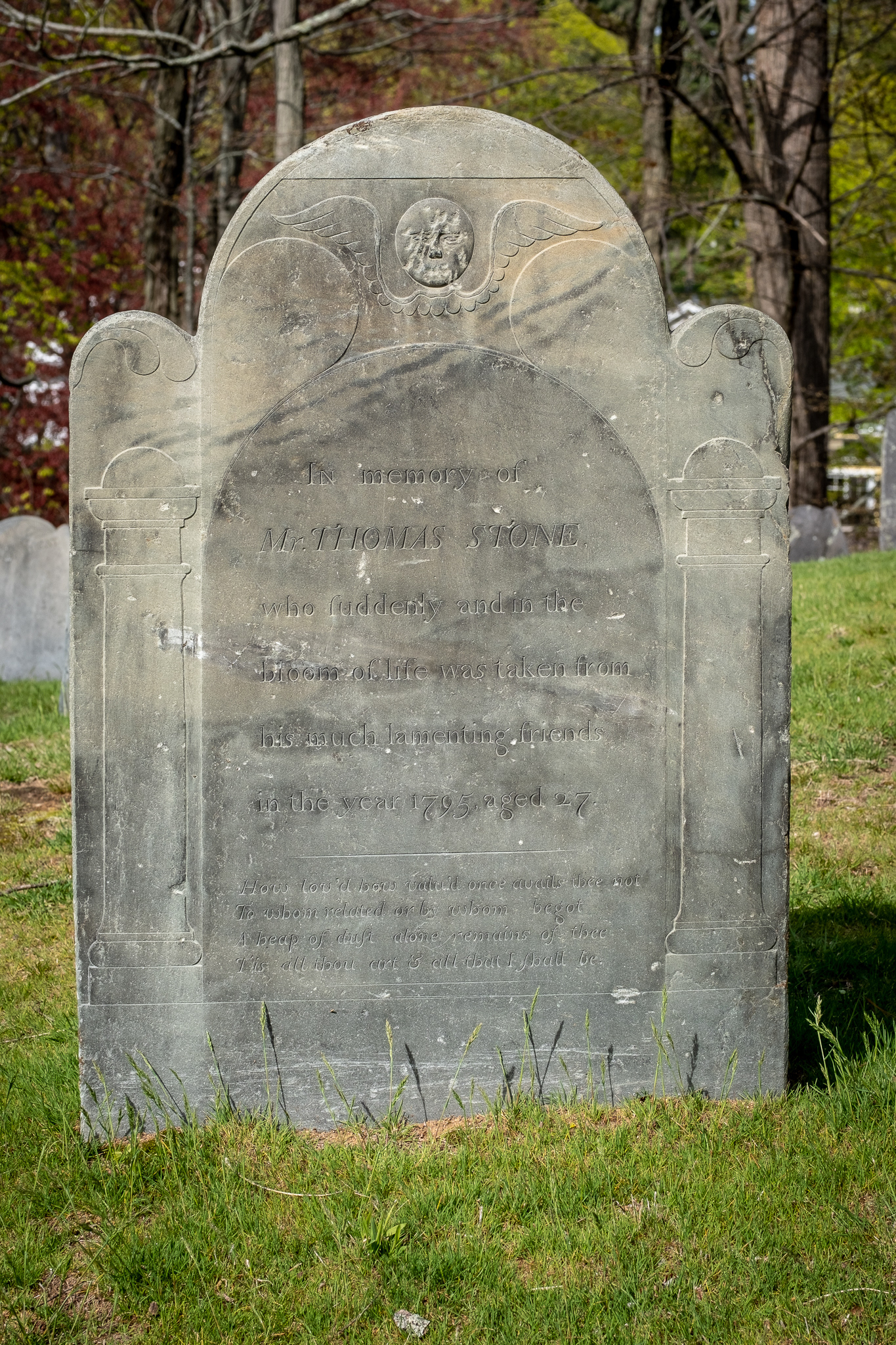
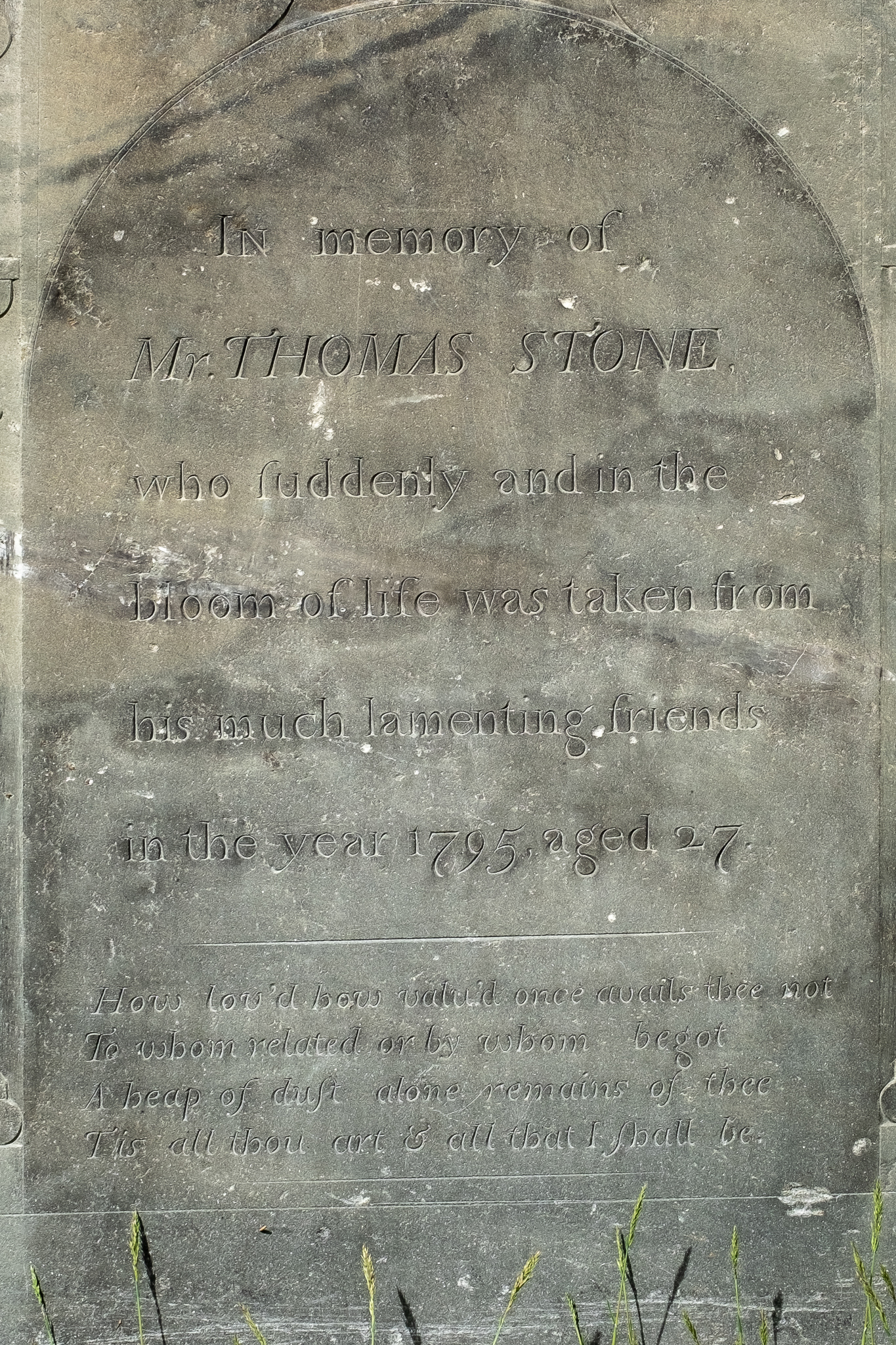
The scary, winged death’s-head, with the empty eyes and barred teeth, is not readily seen in this old cemetery. By the middle of the 18th Century, the terror associated with death, in the Puritan mind, had eased and concern had shifted to comforting the bereaved.
What I saw in my brief visit were the later gravestones, decorated with peaceful icons, such as: more naturalistic heads (originally symbolizing the voyage from life to death, but now honoring the soul of the departed), the willow (tree of life) and the urn (for ashes).
For the Puritans, such funerary art replaced depictions of the human form, common in England, but seen by them as violating the Second Commandment. A thoughtful discussion of Puritan New England funerary art can be found at Wikipedia.
Perched at the very top of the hill is a little brick powder house, located far away from residential areas, because such structures had the inconvenient habit of blowing up, from time to time.
As a visitor, what excited me was the history of the place. The Old Hill Burying Ground goes back to the founding of Concord in 1635. The town is famed, of course, for its key role in the American Revolution. For a period in the 19th Century, it was also the cultural capital of the young United States.
The plaque on the front wall of the cemetery, shown in the first photo, reads as follows:
On this hill, the Settlers of Concord
built their Meeting House
near which they were buried
On the southern slope of the ridge
were their Dwellings during
the first winter
Below it they laid out
their first Road and
on the summit stood the
Liberty Pole of the Revolution
built their Meeting House
near which they were buried
On the southern slope of the ridge
were their Dwellings during
the first winter
Below it they laid out
their first Road and
on the summit stood the
Liberty Pole of the Revolution
The gravestone in the last photo bears this poignant inscription:
In Memory of
Mr THOMAS STONE
who suddenly and in the
Bloom of life was taken from
his much lamenting friends
in the year 1795 aged 27
Mr THOMAS STONE
who suddenly and in the
Bloom of life was taken from
his much lamenting friends
in the year 1795 aged 27
See also:
Puritans - for a fuller discussion of Puritan funerary art
Puritans II - for some handsome gravestone examples
Cemetery - for the famed Sleepy Hollow Cemetery, nearby
Puritans - for a fuller discussion of Puritan funerary art
Puritans II - for some handsome gravestone examples
Cemetery - for the famed Sleepy Hollow Cemetery, nearby

